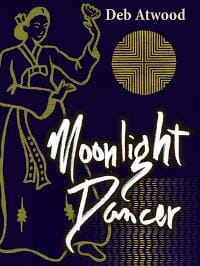Interview with a Cover Artist: Part 2
Cover artist Matt Hinrichs is back with us today for part two of our interview.
Well, Matt, yesterday The Book Designer posted the monthly e-cover design awards. As usual, well worth a viewing. See the contest entries here. Although your Moonlight Dancer cover didn’t win, it did garner this praise from Joel Friedlander: “Very artful blending of illustration and lettering, this cover stands out.”
That’s pretty sweet praise. Congratulations!
Matt, what is your process as you begin a book cover design? What is your favorite part of the designing process?
Normally when I do a fresh book cover design, after receiving the client’s ideas I offer up 5 or 6 rough designs that incorporate sketches or downloaded stock photos. It’s a process that has worked out well, actually, since it gives me a range of things to work with and the client has a variety of options to choose from (in case he or she is undecided about the general look of the cover). This early stage is my favorite part. That, and when it’s finally finished! The in-between stages have an intrigue of their own, since the design invariably never comes out the way you initially envisioned it to be.
Interesting. Let’s take a look at a few more designs.
This one follows a group of people after they are trapped in a train when a massive earthquake nearly destroys San Francisco. I wanted to do something simple and elegant that really grabs the viewer’s attention (the photo is of a crack in our driveway, by the way).
(Deb: interesting how different these two covers are though the author is the same. I like how you diversified based on subject.)
An illustration for a unique stage production mounted by Childsplay, a theatrical troupe here in Phoenix. I was attracted to the idea of digitally combining traditional drawing with photographic textures.
(Deb: very fun. I like how the youngster’s head is coming out of the frame.)
Recipe for Disaster
Another illustration for a Childsplay production; this play follows two chefs who don’t get along–at all! This was a fun opportunity to do something in a looser, more cartoony style and let it run wild.
(Deb: you definitely convey the antagonism here.)
Finally, what challenges did you encounter when designing the Moonlight Dancer cover? For instance, cultural questions? 

Moonlight Dancer was a really interesting project to work with because of the Asian/historical angle. A lot of the initial imagery I had was generically Asian when it really needed a look specific to Korean culture – that was an education. The early drawings of the dancing woman on the cover had traditional Japanese footwear (platform sandal with socks) which Deb informed me is derogatorily referred to as “pig feet” by Koreans. So that had to change!
(Deb: Yep, I did get a laugh when I saw the Korean figure dressed in Japanese shoes. You’d have to know the history, I guess, to understand how rocky the Korean/Japanese relationship has been and how important symbols are.)
What do you wish authors knew about your work? What is the biggest misconception authors have about book designing?
Some authors (clients in general, really) believe that designs can be just “whipped out” and completed in mere minutes. Sorry, folks, that just isn’t so. Even a relatively simple, image-free cover takes a few hours, which I have learned over the years to take into account when giving a cost estimate. It may be time consuming, but it’s still fun (something that you cannot put a price on).
What advice would you give for people wanting to enter the field of book cover design? How do cover artists market their services, for example?
The best advice that a budding book cover designer could get is to look around at books (preferably in an actual book store or library) and take mental notes of what works and what doesn’t. Use social media to follow designers and illustrators whose work you admire. Also, network! I’ve been doing book covers for eight years now, but it’s only really taken off in the past year. That is partially due to having a few family members who are authors jumping onto the e-book bandwagon.
How can authors interested in your work get in touch with you?
I can be reached at designer@scrubbles.net and my online portfolio is located at http://www.scrubbles.net/portfolio.html.
Thank you, Deb, for taking the time to interview me.
Thank you, Matt, for joining us today and sharing some of your cool art. If any of you have questions for Matt or me, please leave a comment.




3 thoughts on “Interview with a Cover Artist: Part 2”
Once again let me say how much I appreciate the insight as well as getting to know an artist and see work that I hadn’t seen previously. Since as far back as I can remember I’ve been held captive by the images on the covers of books. I consider it one of the most wonderful forms of art and have bought many, many a book because of the siren call of the cover image. Being able to see where Matt gets his inspiration and what his thought processes are behind some of his covers has been a treat. Thank you both. 🙂
Carl, I’m so glad you enjoyed this glimpse into an artist’s life. It’s been fun for me, too. My second daughter and I spent the weekend in Carmel, and I just drooled over all the imaginative arts and crafts we saw there. If I could come back in another life, I would like to be a visual artist.
I’m with you there. I try to do creative visual work on occasion but I’m not dedicated enough to it. It has been much more of a passion to look at and mull over and less of one to practice.